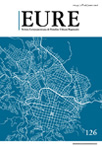Educar a niñas y niños de clase media en Santiago: capital cultural y segregación socioterritorial en la formación de mercados locales de educación
DOI:
https://doi.org/10.4067/S0250-71612016000200008Palabras clave:
capital cultural, cultura urbana, segregaciónResumen
Muchos investigadores han estudiado en forma paralela la segregación residencial y la educacional, sin considerar cómo se relacionan ambos procesos. Este artículo explora la forma en que los padres de clase media eligen colegios en Ñuñoa y La Florida (Santiago, Chile). Ñuñoa es una comuna de clase media alta con una gran dotación de colegios particulares pagados; La Florida, en tanto, contiene una clase media de formación más reciente, una tasa de pobreza más alta y una gran cantidad de colegios subvencionados. Este artículo, basado en entrevistas semiestructuradas con 77 padres, revela que, en Ñuñoa, los padres eligen entre colegios particulares pagados y descartan la opción de enviar a sus hijos a colegios municipales o subvencionados. Al contrario, los padres de La Florida eligen colegios subvencionados como una forma de evitar los peligros que perciben en los colegios municipales. Estos resultados tienen significativas implicancias para los debates sobre la segregación residencial y educacional.
Descargas
Publicado
Cómo citar
Número
Sección
Licencia
Derechos de autor 2016 Revista EURE - Revista de Estudios Urbano Regionales

Esta obra está bajo una licencia internacional Creative Commons Atribución 4.0.
Al momento de aceptar la publicación de sus artículos, los autores deberán formalizar la cesión de derechos de autor a EURE, según las condiciones establecidas por la Revista.
Ésta establece que el autor autoriza a EURE de manera gratuita, exclusiva e ilimitada a reproducir, editar, publicar, distribuir, publicitar, comercializar y traducir el artículo, a cualquier soporte conocido o por conocer y desarrollar.
Del mismo modo, los autores aseguran que el artículo propuesto es original, no publicado y no propuesto para tal fin a otro medio de difusión.


